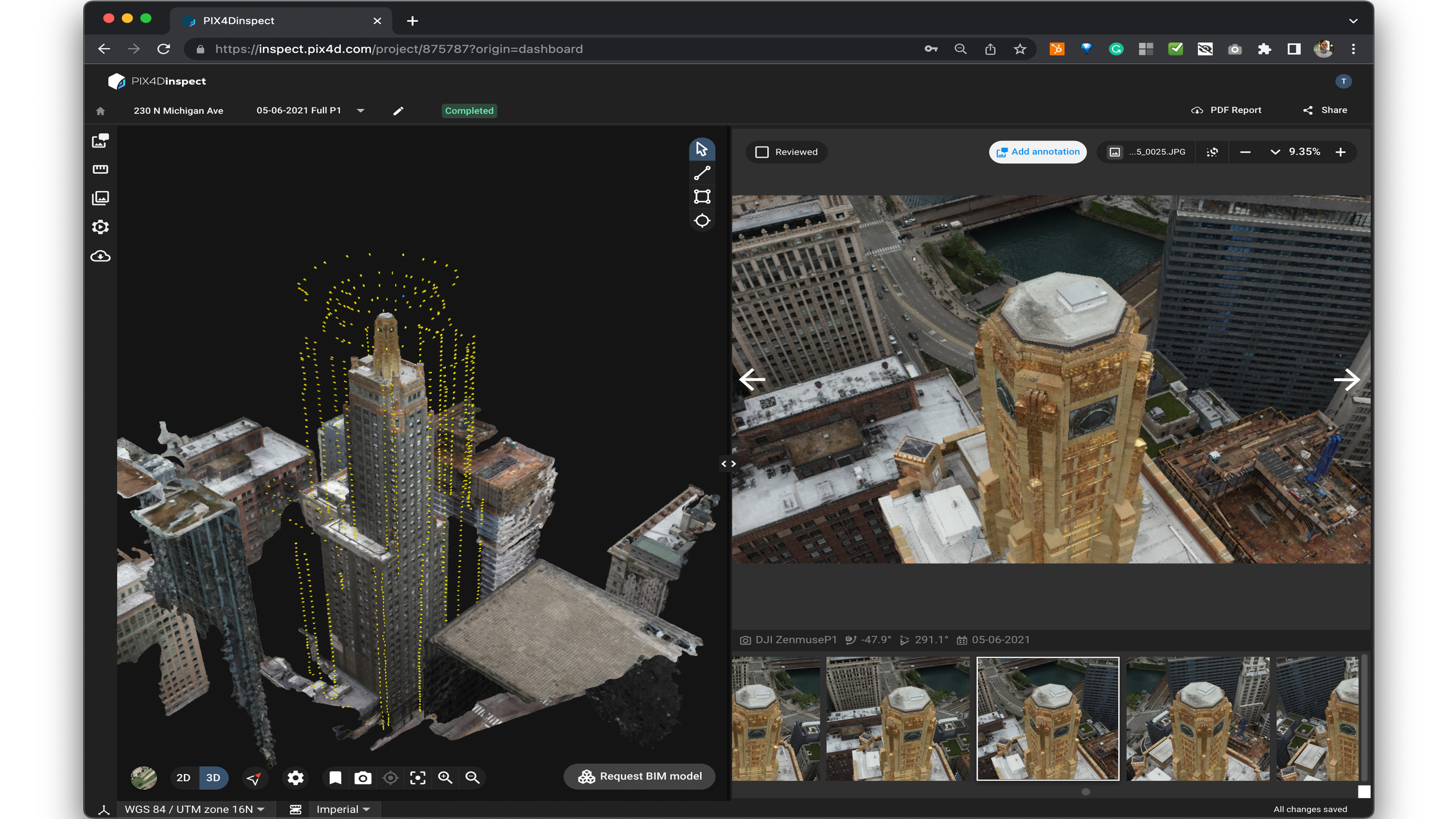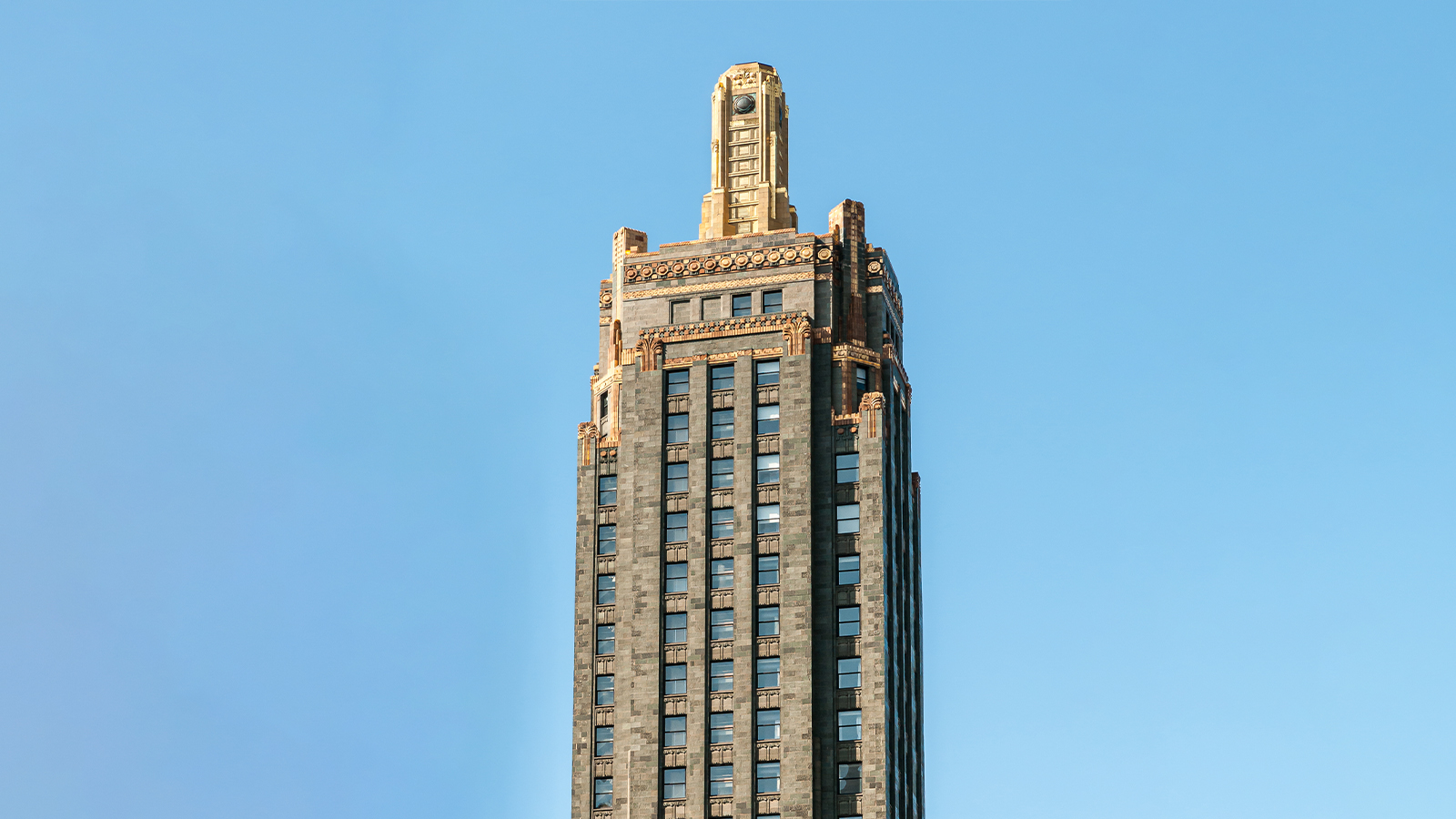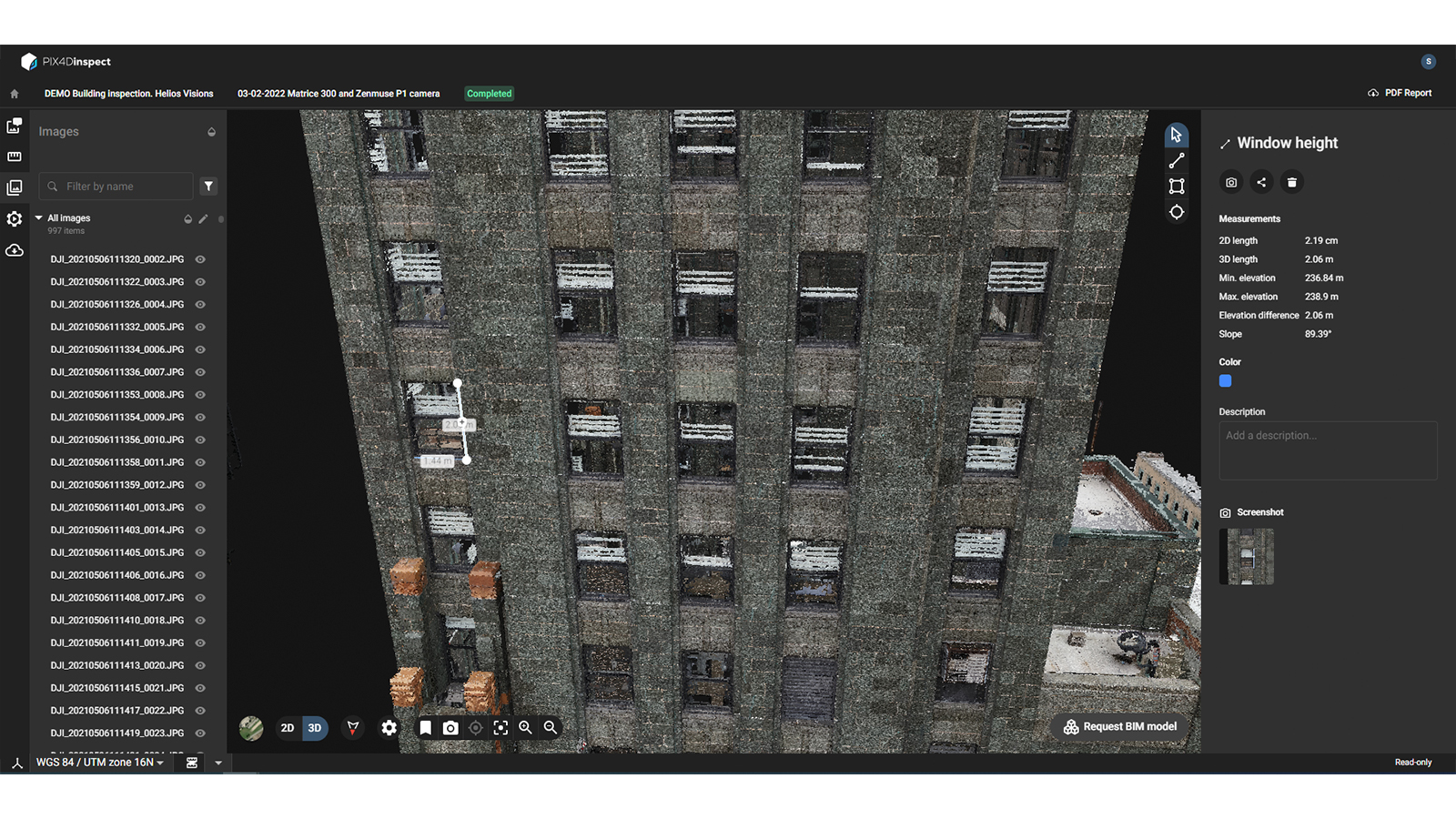From: https://www.heliosvisions.com/2023/02/21/inspecting-high-rise-buildings-with-drones/
Digital twins are virtual recreations of real objects. They are used in commercial real estate assets for inspections, or in construction to plan and track new buildings with Building Information Modeling (BIM). Digital twins have many benefits for areas of inspection such as facades and bridges, where a detailed 3D model can provide better access to the asset. Digital twins of high-rise buildings and construction sites provide data that can be used for inspection, maintenance, and documentation. When paired with drone inspection software, a digital twin can be achieved faster than a manual inspection with better safety and cost savings.

3D model of the building ready to inspect, analyze and share

Union Carbide and Carbon Building
The new owners of the building decided it needed a condition assessment to check for any maintenance needs before the launch of the new renovation. This building assessment would include checking the facade for any damage or potential upkeep requirements. These inspections are important for ensuring high-rise buildings are safe – if an element becomes loose, or falls, it could pose a danger to people nearby.
Helios Visions sent a drone inspection team to the building to gather data to assist in the building assessment. Our drone pilots collected high-resolution georeferenced imagery of the building’s facade and rooftop. The drone flight had to cover the entirety of the building and ensure enough overlap between images so the drone software could process an accurate 3D model. The whole building was inspected with drones in just one day. After data collection, the Helios Visions team uploaded the imagery to the cloud-based software and deliver the 3D digital twin to the client.

Performing measurements on the digital twin
Once the annotations and measurements were completed by the structural engineers. The client used the digital twin model for historical records and documentation, as well as plans for any changes or maintenance to the building. With the annotations, detail, and accuracy all combined in the digital twin, the client now has a complete idea of the status of the entirety of the building – all thanks to a drone facade inspection and digital twins!
How drone technology made a facade inspection of a 500 ft tall building in Chicago easy
Chicago is home to over 1,000 high-rise buildings. Some of these high-rises are brand new; others were built in the late 1800s and early 1900s. Each skyscraper has its own style and character. For many of these structures, construction, and maintenance pose a real challenge. How can you see the side of a building in detail when it could be hundreds of feet above you? Enter: drones and digital twins.Digital twins are virtual recreations of real objects. They are used in commercial real estate assets for inspections, or in construction to plan and track new buildings with Building Information Modeling (BIM). Digital twins have many benefits for areas of inspection such as facades and bridges, where a detailed 3D model can provide better access to the asset. Digital twins of high-rise buildings and construction sites provide data that can be used for inspection, maintenance, and documentation. When paired with drone inspection software, a digital twin can be achieved faster than a manual inspection with better safety and cost savings.

3D model of the building ready to inspect, analyze and share
Specialized infrastructure inspection with drones
Helios Visions is a drone services company specializing in infrastructure inspections via drone for companies throughout the USA. Typical projects include inspections of buildings, facades, construction sites, bridges, and other infrastructure with drones. We were contracted by a local engineering firm to inspect a historic high-rise building in Chicago with drones. We collected the aerial data of the building’s facade and processed the drone imagery.Inspecting the Union Carbide Building with drones
The Union Carbide and Carbon Building, designed by the renowned Burnham Brothers firm, was completed in 1929 in an art-deco architectural style. Standing 503 feet tall, it stands at 37 stories. It was declared a landmark in the 1990s and saw some restorative work in 2004, totaling $106 million dollars. It’s an iconic part of Chicago architecture, with a facade including granite and terra cotta elements.
Union Carbide and Carbon Building
The new owners of the building decided it needed a condition assessment to check for any maintenance needs before the launch of the new renovation. This building assessment would include checking the facade for any damage or potential upkeep requirements. These inspections are important for ensuring high-rise buildings are safe – if an element becomes loose, or falls, it could pose a danger to people nearby.
Helios Visions sent a drone inspection team to the building to gather data to assist in the building assessment. Our drone pilots collected high-resolution georeferenced imagery of the building’s facade and rooftop. The drone flight had to cover the entirety of the building and ensure enough overlap between images so the drone software could process an accurate 3D model. The whole building was inspected with drones in just one day. After data collection, the Helios Visions team uploaded the imagery to the cloud-based software and deliver the 3D digital twin to the client.
Creating a digital twin of a building with drones
The digital twin showed all of the facades and rooftops of the building and was used for a detailed analysis of the condition of the building’s exterior. This included careful inspection of the status of the building’s facades, and rooftops, annotations of maintenance requirements, and measurements of architectural elements. We shared their digital twin with our engineering client, who highlighted areas where potential maintenance or repair work could be required. This immediately provided the building owners with valuable information about the condition of the building. The digital twin can also be used in the long term as a baseline to monitor the building’s conditions. We compiled the 3D digital twin, and high-resolution imagery, and shared them with a structural engineering company to complete a building maintenance report for the client.The future of building inspections with drones
After the digital twin was generated, the engineering company used the data to do the initial inspection of the building for the conditions assessment. The digital twin is hosted online and easy to share between the engineers and the client. The engineers commented on the ease of measuring the length and areas of elements on the model and crisp high-quality imagery. The straightforward user interface of the inspection software made collaboration easier for everyone.
Performing measurements on the digital twin
Once the annotations and measurements were completed by the structural engineers. The client used the digital twin model for historical records and documentation, as well as plans for any changes or maintenance to the building. With the annotations, detail, and accuracy all combined in the digital twin, the client now has a complete idea of the status of the entirety of the building – all thanks to a drone facade inspection and digital twins!
Last edited:
